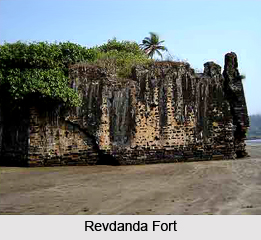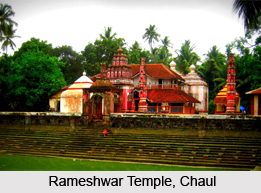 Inhabited since early historic times, Chaul has been under domination of umpteen dynasties. As with the unwritten rule, empires, like rulers, rise and fall without much hassle. So is it with Chaul - once the nerve of the Satavahana kings and now just a bypass to the delights of Alibaug on one side and Murud-Janjira on the other.
Inhabited since early historic times, Chaul has been under domination of umpteen dynasties. As with the unwritten rule, empires, like rulers, rise and fall without much hassle. So is it with Chaul - once the nerve of the Satavahana kings and now just a bypass to the delights of Alibaug on one side and Murud-Janjira on the other.
Chaul has been populated since 300 B.C., its golden age traversing the reign of the Satavahanas from 2 B.C. to 3 A.D. "Chaul`s pre-eminence continued till the 17th century," says Prof. Vishwas Gogte of Pune`s Deccan College, who has spent the last two years trying to uncover the life and times of Satavahana Chaul.
So fertile was this now forgotten kingdom that there were various names for it. The Arabs called it `Simur`; then there names like `Semulla` and `Chimolo` came in. Speculations like, was it rice (chawal) that gave rise to the name Chaul, or was it the lovely Champa flower that gifted the place its name have come up time and again. Answers, most likely have been lost forever, with the dynasties lost in the sands of time.
The Portuguese built the Revdanda Fort in 1524 here and girded it later. During that time, Chaul was five times the size it is today. These days, the chief thoroughfare of Revdanda cuts through the fort. Inside, coconut groves rise amidst the remains. Not too far on the horizon stands the Portuguese-built Korlai Fort.
The people in the adjacent village, mostly Christians converted back then, still speak a curious mixed dialect of English, Portuguese, Dutch, French and Marathi. The language, known only to a few hundreds, is dying slowly. And the Chaul Fort, lauded in ancient texts and inscriptions, is but a jetty for a private company.
 But there are other things one can do in Chaul. It is advised to stop by at Theronda and ask someone to show the remains of the 36-ft long blue whale. One can also look out for the ancient baobab trees too. These extraordinary trees, which appear like they have been planted upside down, came from Africa to India over 1,500 years ago. The tree is leafless for nine months of the year and bears flowers and leaves during the remaining months.
But there are other things one can do in Chaul. It is advised to stop by at Theronda and ask someone to show the remains of the 36-ft long blue whale. One can also look out for the ancient baobab trees too. These extraordinary trees, which appear like they have been planted upside down, came from Africa to India over 1,500 years ago. The tree is leafless for nine months of the year and bears flowers and leaves during the remaining months.
Within the bounds of the Revdanda Fort, on a treetop, is a nest which could be 13 ft in diameter. Its lodger, the sea eagle, leaves home at 6 a.m. and is back by 6 p.m. Just admiring the sea eagle`s take-off is worth rising early for.
In Revdanda, a traveller can visit the Hingoli Devi Temple, built by Gujarati Bhansales. The temple has the origin of its name from a river in Afghanistan. According to lore, the Rameshwar Temple was supposed to have been built in a day by the Pandavas, but they were unable to complete it. Centuries later, Kanhoji Angre (Maratha navy admiral, 1698-1729) completed the work. It is a must to look out for the elaborate samadhi
(entombment) behind the temple. Locals are of the faith that it is a memorial to one of the Angres. No one however has the idea exactly which one is the true burial.
There are loads of essential living facilities available, especially at Revdanda, but the Vikram Vatika is a reasonable choice. Everybody eats seafood in this town, so if one is not a vegetarian, it is better to follow the other tourers. In Revdanda market, one be in the look out for the Vishwas Bakery, for freshly baked khara biscuits that can be dipped in hot tea.
Chaul is approximately 123 km from Mumbai and roughly 10 km from Alibaug. One can easily hire a taxi or a bus from Murud.



















